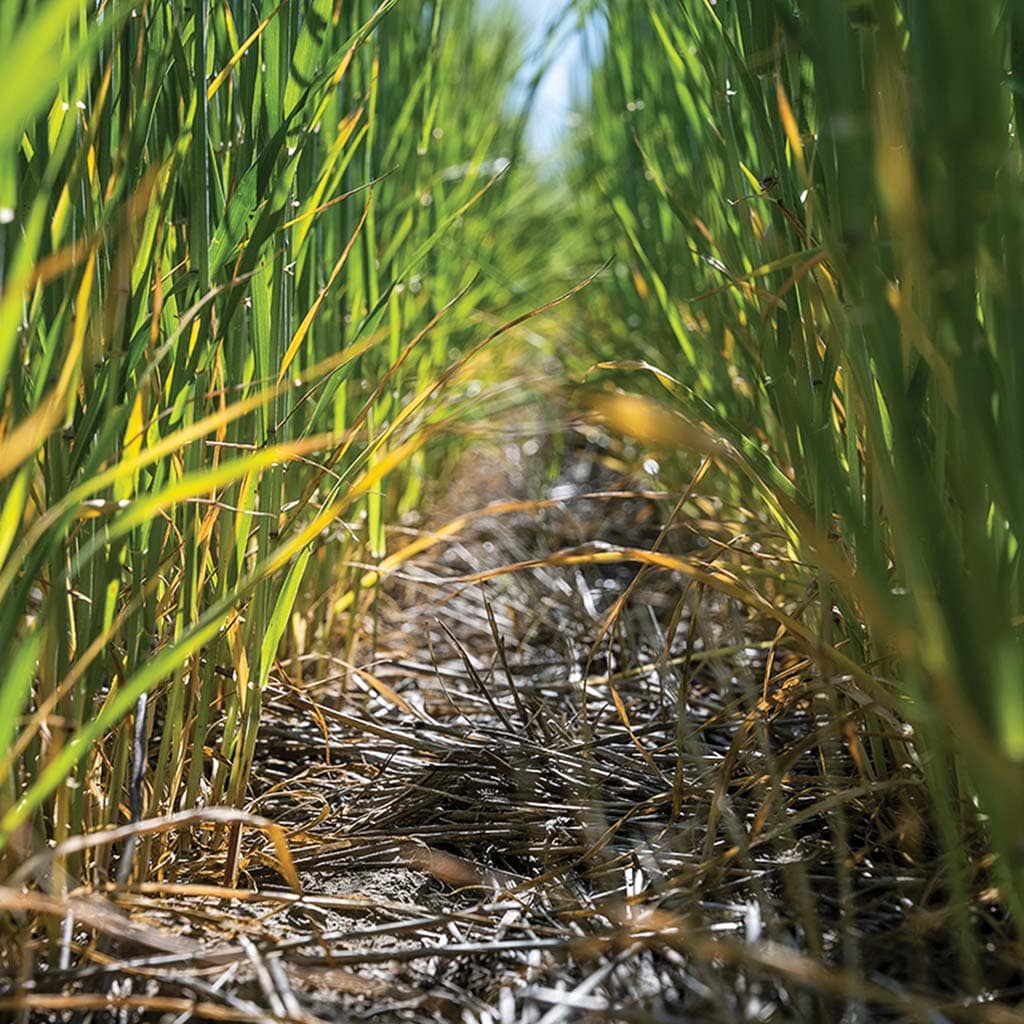Agriculture, Sustainability January 01, 2023
Nourishing Soils, Building Opportunity
.
Increased productivity could make way for more producers.
Farming regeneratively, as Wendy and Korey Fauque do, takes more labor as compared to traditional systems, but that's a good thing in their eyes. "It makes our community healthier," says Korey.
The couple, who farm just south of the Canadian border in Sunburst, Montana, employ two young, open-minded agriculturists.
Willow Wieskamp grew up on a small farm in central Nebraska and Cody Hanson, a ranch kid from just down the road in the iconic Sweetgrass hills, both work full-time on the farm. Even in this area—a strong farming and ranching community—it's hard for kids to get into agriculture.
"Because we've reduced inputs and expenses by using the farming practices we now use, we can afford to hire help and create opportunity," Wendy says.
The Fauques shifted away from the standard small grain-fallow rotation of the region. It was a move started when Korey's dad, Randy, made the shift to no-till. Wendy and Korey took it further when they took over the farming side of the operation in 2012.
Over the last decade they've implemented continuous cropping, cover crops, intensive rotational grazing of rangeland and cropland, and produce their own native biological extract used as a starter at planting.
These methods have cut costs in many areas and increased production significantly. This, in turn, makes hiring help to facilitate the more intensive management strategies a financially feasible option. It's also an opportunity to share agricultural knowledge with the next generation.
"It's a neat way to get young people more involved in agriculture again and give them that open door to get started," Wendy says.
That door leads to an education in some very progressive farm management strategies.
"[The Fauques] are always trying something new, which makes it more fun than an average farm worker job," Wieskamp says as she points out more clusters of mushrooms popping up under the canopy of a flax crop—an indication of a thriving soil life community and a direct result of the biological extract she helped compost, extract, and apply. "There are definitely a lot of practices from here I would like to take back to our farm."
Hanson, 21, focuses more on the livestock side of the operation. His family runs a cattle and sheep operation but all family members work full-time off the ranch.
"There aren't enough jobs or ranch income to keep us all busy," he says. What he's learning with the Fauques may help his home ranch produce more income, though.
"I learned about things like intensive rotational grazing in college, but seeing it and doing it in person really shows how beneficial it is. There's a lot to learn here. These guys are always willing to do something new," Hanson says.
Above. Cody Hanson, Willow Wieskamp, Wendy and Korey Fauque. Ditching fallow and farming regeneratively allows the Fauques to fund jobs instead of skyrocketing inputs. They raise a half dozen or more different crops continuously each year. Farm mascot, Millie, especially appreciates the thriving fields of peas perfect for snacking.
Nurturing growth. The Fauques don't just assign tasks to their young help, they explain in detail what they're doing and why. They're happy to share everything they do—the successes and failures—with those around them.
"We want to farm in a way that makes smaller farms more profitable so we can continue to have family farms," Korey says.
Hanson is picking up insights on intensive rotational, cover crop and bale grazing, and creating value-added lines of income.
"They have a retail beef business. Today's markets are so crazy, it's good to think outside the box for extra income," Hanson says.
Cutting costs is key, too. The Fauques used to run an ag retail business off their farm. They eventually left the business as they had significantly cut their inputs. They no longer needed vast supplies of glyphosate to maintain chemical fallow and they stopped using all fungicides and insecticides to protect soil biology.
Less tillage led to fewer annual grass issues. Intercropping flax and chickpeas resulted in no fungicide treatments needed for aschochyta. Variable rate fertility further lowered input costs.
The warehouse is now void of pallets making room for Wendy's cherry red 1965 convertible Mustang, employee offices and freezers with their retail beef products.
"Yields are 75-80% of traditional practices, but we're making a lot more money because we're growing crops on every acre, using fewer inputs, being strategic with the inputs we do apply and investing in soil health and our community," Wendy says. ‡
Read More

SPECIALTY/NICHE
Elevating the Rose
Growing the world's best roses high up in the Andes Mountains.





